Andrews Air Field, (Great Saling) Britain 1944
We were sent to Andrews Field which was located near Braintree , England London in the County of Essex Bury St. Edmonds Bury St. Edmonds Holland
Andrews was what they called a Class A airfield and was built by Americans about 18 months before we got there. Class A meant there were 3 runways, roughly located in a triangle shape. The main runway was 6,300 feet long, 300’ longer than usual. The other two runways were shorter. Andrews was the only British field named after an American: General Frank Maxwell Andrews, who had been killed in an airplane crash. Before that it was called Great Saling.
This base was the squadron headquarters and was a full operating base, not a training base. In addition to the headquarters, there was an iron hut building for mission briefings and debriefings, a mess hall, hospital, a chapel, store, supply warehouses, a motor pool and living quarters. The officer’s living quarters were on the east side and were mostly the corrugated iron huts with brick ends that had a door and 2 windows covered with black out curtains. The floors were concrete and there was a small stove in the middle for heat. They were cold, damp and musty. There was a bath hut with tubs, showers and hot water but little heat. Since our quarters were about a mile away from the runways we would mostly march from place to place. Bombs and ammunition were stored outside the perimeter in what they called munition “dumps.” They were a combination of concrete and dirt mounds to protect the ammunition from attack or crash landings. The fuel dump was on the north side of the base. There was a tower, two hangers and several maintenance shops for the constant repair of the planes coming back from combat. I think there were a couple thousand men on the base in one capacity or another.
On Mission days we were usually up at 5am and went to the mess hall for breakfast. Later, an Army truck would pick us up at quarters and deliver us to the briefing hut. Everyone was to be in the hut by a certain time and sometimes bring your equipment, other times get it afterward. That would include your full flight suit, flack jacket, warm helmet and hard helmet, gloves, parachute and combat gear. You didn’t want to put that on until you were ready to fly.
There was a stage at the front of the building (opposite the end with the door) and rows of chairs with an aisle down the middle. Behind the stage on the wall there was a map that was usually covered until the briefing started. Briefings started when the C.O. (Commanding Officer) walked into the building and someone yelled Attention! He would put us at ease and the Operations Officer would take over, reveal the map and give us the skivvy on the mission’s goals. It might be taking out an ammo dump, hitting a marshalling yard or whatever the target was. They would give us information about the target and tell us where we might encounter heavy anti-aircraft attack concentrations. We were given a lot of details, including things like the ships that we might pass over as we crossed the channel.
Crew pilots were given a Mission sheet which told them things like which plane their crew would be assigned to (by serial number) what place they’d be in the formation, what number they’d be in line for take off and what time they should start their taxi and take off. It told the Capt if there were other Groups on the Mission Mission day.
When I made Captain and got my first Mission sheet I was surprised to see the "Standard Operating Procedure to follow when landing on the Continent" clearly written out at the bottom. That would be equivalent to a crash landing – or at least a crippled emergency landing. The SOP said: 1. Whenever possible, land at a field at which 8th AF Service Command Center facilities are located. 2. Have radio operator contact base giving necessary information. Pilot can contact ground station on VHF. 3. After landing, pilot will (s) arrange for medial assistance, if necessary, (b) fill out “Forced Landing Card” from rear of pilot’s or co-pilot’s seat, (c) safeguard all secret and confidential items on ship, (d) contact nearest 8th AF Service Command Service Center representative if one isn’t on the field and (e) contact home base. (Use VHF or W/T in the air or on the ground.) 4. Crew members will be responsible for individual flying equipment.
After the main briefing, the Intelligence Officer filled us in and after that the weather reports. Then we’d set our watches so that everyone had the exact same time down to the second, so that we could follow the take off instructions exactly. Precision was extremely important. When the briefing was done and the C.O. marched out, we’d gather our gear or head back to get it and climb aboard the Army trucks that would take us all to our planes. Usually Officers went in one truck and enlisted men in another since we lived in separate huts.






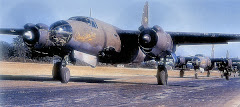
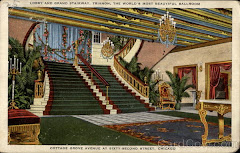
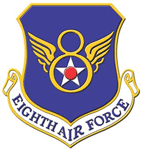
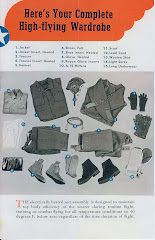
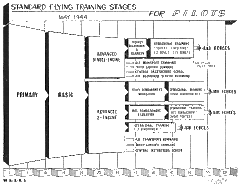
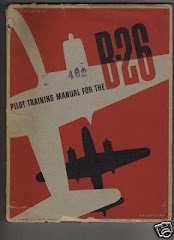
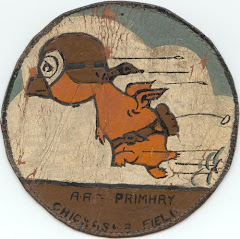

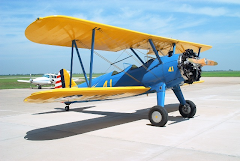


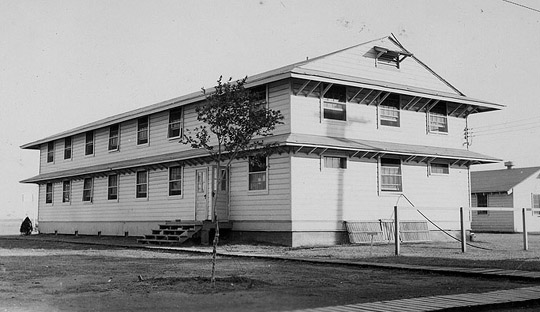
No comments:
Post a Comment